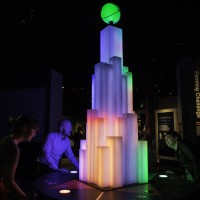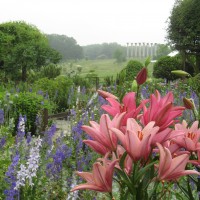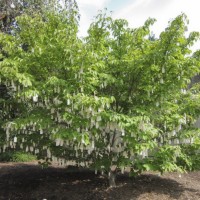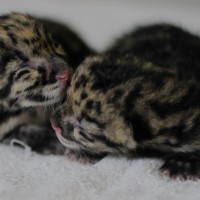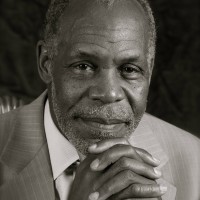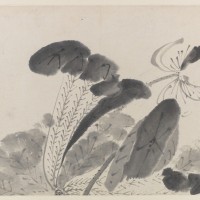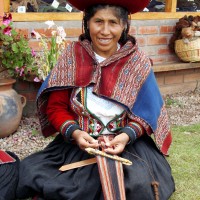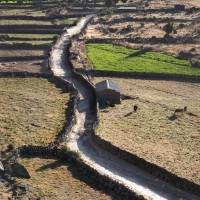Highlights from the 2015 Summer All-Staff Meeting
Dr. David Skorton, 13th Secretary of the Smithsonian, held his first all-staff meeting July 16 at the American History Museum. He shared something of his philosophy and expressed how important it is to work together in a way that allows the Smithsonian to share our knowledge in a way that helps make the world a better place. If you weren’t able to attend the meeting in person, watch the webcast here (on Prism) or here (UStream).
What’s New
The National Museum of American History reopened the first floor of its renovated west wing July 1. It celebrates America’s innovative spirit by offering more than a dozen exhibitions, learning spaces and program places devoted to innovation, creativity and business.
In celebration of the Arctic Council’s role in protecting the Arctic, the National Museum of Natural History unveiled a new exhibition called “Primordial Landscapes: Iceland Revealed” on July 2. The exhibition takes visitors on a memorable journey through some of Iceland’s most breathtaking and mysterious natural landscapes. It is located in the Special Exhibitions Hall on the first floor of the museum and will run through April 2017.
On July 8, under the auspices of the National Museum of Natural History’s Global Genome Initiative, scientists and field teams from the department of botany began an ambitious plan to preserve the genetic diversity of plants. They began sampling plants from Smithsonian Gardens, the U.S. Botanic Garden and the Department of Agriculture’s U.S. National Arboretum, as part of GGI’s goal of preserving half of the genomic diversity of life on Earth in networked biorepositories.
Yoko Ono’s participatory artwork “Wish Tree for Washington, D.C.” (2007) is open for the summer. The tree, located in the Hirshhorn Museum’s Sculpture Garden, is adorned with wishes written on tags by visitors from around the world.
This month, the National Portrait Gallery added two portraits of AIDS research pioneer Dr. Mathilde Krim to its collection. The new acquisitions enable the museum to represent a leading figure in the effort to treat and prevent the spread of AIDS.
- One of several interactives within the American Enterprise exhibit. Spin a wheel and try to get to the top of the Tower of Power. (Photo courtesy of the National Museum of American History)
- Lake Jökulsárlón shimmers with the reflection of a magnificent iceberg. This lake, located at the edge of Vatnajökull, Iceland’s largest ice cap, formed slowly when part of the glacier began to recede in the 1920s. The glacier continues to calve (split), releasing more icebergs into the expanding lake. This image is one of 41 photographs taken by Feodor Pitcairn on display in the Smithsonian National Museum of Natural History’s new exhibition, “Primordial Landscapes: Iceland Revealed.” (Photo courtsy of Pitcairn Fine Art)
- The U.S. National Arboretum is one of the partner sites where Smithsonian scientists will capture genomic samples for preservation in a globally networked biorepository. (Photo courtesy of U.S. National Arboretum)
- Yoko Ono’s participatory artwork “Wish Tree for Washington, DC” (2007) is open for the summer at the Smithsonian’s Hirshhorn Museum and Sculpture Garden. For most of the year, visitors are invited to whisper their wishes to the tree, a white flowering dogwood in the museum’s collection. But during the summer through Labor Day, they may write their wishes on paper tags and tie them to the tree’s branches. (Photo courtesy of Hirshhorn Museum and Sculpture Garden)
- Mathilde Krim by Joyce Tenneson, Inkjet print, c. 2000 (printed 2014), National Portrait Gallery, Smithsonian Institution; gift of amfAR, The Foundation for AIDS Research
Highlights
For only the second time, a litter of clouded leopard cubs has been born as the result of artificial insemination. Pierre Comizzoli, reproductive physiologist at the Smithsonian Conservation Biology Institute, performed the artificial insemination in Thailand last March alongside Paweena Thuwanut, a former JoGayle Howard Postdoctoral Fellow at SCBI, and Wanlaya Tipkantha, a doctoral candidate at Chulalongkorn University, who also studied at SCBI. The two cubs were born at the Khao Khew Open Zoo in Chonburi, Thailand, June 9. The artificial insemination was the first successful procedure performed on a clouded leopard outside the U.S.
The Anacostia Community Museum presented its Summer Soirée benefit event, “Boogie Down DC: Celebrating the 70s and 80s in Washington,” June 12 at the Castle. The event benefits the museum’s exhibitions and public programs. The event paid tribute to actor Danny Glover, who received the John R. Kinard Leadership in Community Service Award, which is named after the museum’s founding director.
On June 13, Acting Secretary Al Horvath led a contingent of Smithsonian staff, contractors, interns, volunteers, researchers, artists, family and friends in the annual Capital Pride Parade marking Lesbian, Gay, Bisexual, and Transgender Pride Month. That night, the Freer and Sackler Galleries hosted Asia After Dark: Peacockalypse, featuring the “Filthy Lucre” exhibition and the band Betty, presented in partnership with Capital Pride.
On June 20, the Freer Gallery of Art opened “Enigmas: The Art of Bada Shanren (1626–1705).” The exhibition features 43 of the artist’s works, on public display for the first time in more than a decade. It is the final exhibition of the Freer’s celebrated collection of Chinese paintings before the museum closes for major renovations in 2016.
The 49th annual Smithsonian Folklife Festival came to the National Mall June 24. This year’s event highlighted the culture of Peru, one of the most ecologically and culturally diverse countries in the world. “Perú: Pachamama” featured more than 150 participants highlighting the diversity and vitality of Peruvian and Peruvian American communities.
The National Museum of the American Indian opened “The Great Inka Road: Engineering an Empire” June 26. This is the first major bilingual exhibition to focus on this historical engineering achievement, a vast system of roads that spans five modern countries. The exhibition was complemented by a two-day symposium June 25 and 26.
The world’s most famous and valuable stamp, the British Guiana One-Cent Magenta, went on display at the National Postal Museum’s William H. Gross Stamp Gallery in June. It will be on display until November 2017.
“Good Thinking! The Science of Teaching Science,” a free web series designed by the Smithsonian Science Education Center to support science educators, debuted in June. The series starts with three episodes, with more premiering throughout the summer. The series is currently available on SSEC’s website and YouTube page.
For the first time, researchers at the Smithsonian Conservation Biology Institute’s Migratory Bird Center have tracked small migratory ovenbirds to their tropical wintering grounds with unparalleled accuracy. This significantly improves the understanding of migratory connectivity, which is key to future conservation efforts.
- Clouded leopard cubs born June 11, 2015 in Thailand. The two cubs are only the second litter born as the result of an artificial insemination and the first born outside of the United States. (Photo courtesy Khao Khew Open Zoo)
- Actor and activist Danny Glover was the recipient of the Anacostia Community Museum’s John R. Kinard Leadership in Community Service Award June 12.
- For the first time, the Smithsonian’s lesbian, gay, bisexual, transgender and questioning/queer employees were formally represented at the annual Capital Pride Parade in June. Joining the “fighting peacocks” of SI Globe and friends in the parade were Acting Secretary Al Horvath; Eduardo Diaz, director of the Smithsonian Latino Center; Johnnetta Cole,director of the African Art Museum and Cynthia Brandt Stover, director of the National Campaign. (Photo courtesy of Rogelio Plasencia)
- Lotus 荷花圖 (冊・八頁). Bada Shanren (Zhu Da), 1626-1705 八大山人 (朱耷); China, Qing dynasty, ca. 1665; Album (8 leaves), ink on paper (Bequest from the collection of Wang Fangyu and Sum Wai, donated in their memory by Mr. Shao F. Wang, F1998.53.8; Freer Gallery of Art, Smithsonian) From the exhibition Enigmas, the Art of Bada Shanren (1626 – 1705)
- The history, people and culture of Peru were the focus of the 2015 Folklife Festival on the National Mall. Here, a woman from Chinchero uses a backstrap loom to weave naturally dyed fibers into a belt. (Photo by Josue Castilleja)
-
An Inka road with sidewalls cuts through an agricultural valley. Colca Canyon, Peru, 2014. Image from The Great Inka Road: Engineering an Empire, edited by Ramiro Matos Mendieta and José Barreiro. Published by the Smithsonian’s National Museum of the American Indian in association with Smithsonian Books in conjunction with the exhibition of the same name.
Photo by Doug McMains, National Museum of the American Indian, Smithsonian Institution.
- The world’s rarest postage stamp, the 1856 British Guiana One-Cent Magenta is on view at the National Postal Museum.
Posted: 16 July 2015
- Categories:
